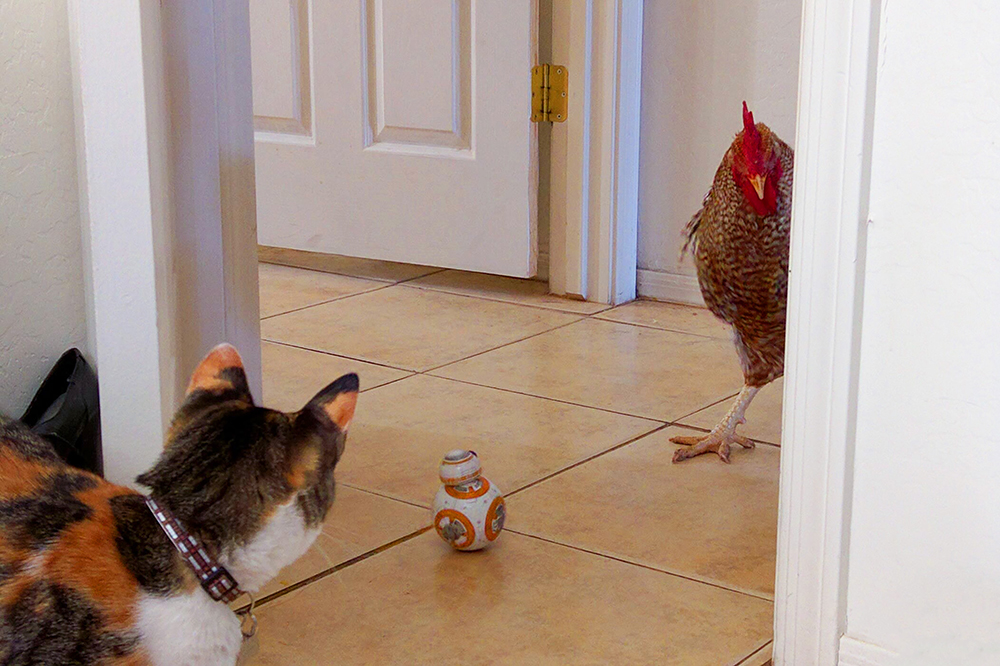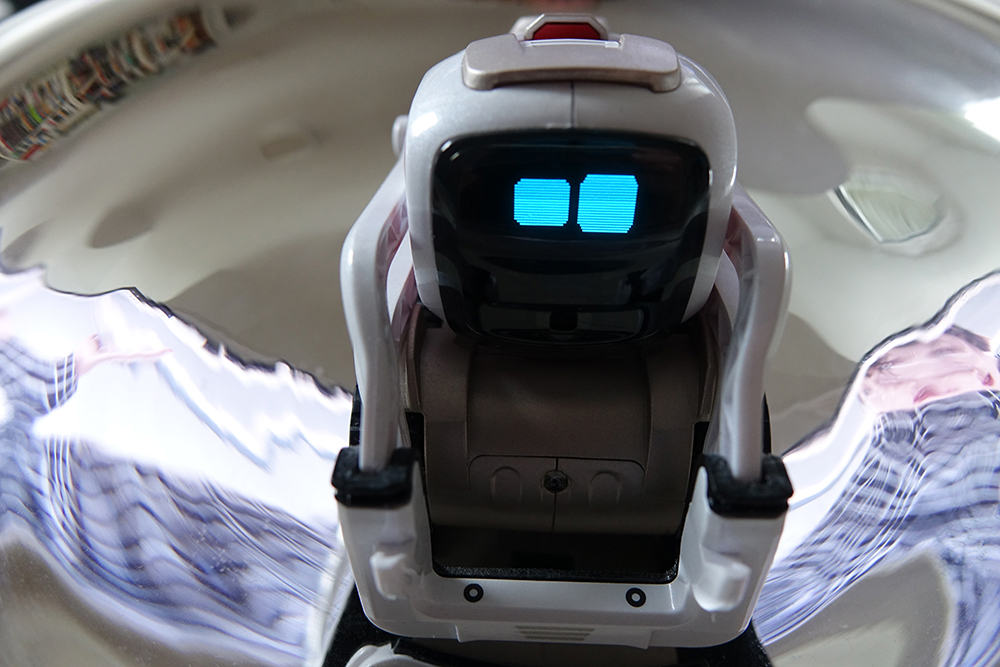In May 2020 the media was interested in a video by Rocos showing a robot from Boston Dynamics trying to be a shepherd dog. You could see the artificial quadruped running towards a flock of sheep. “Now, it’s clear that the video is mostly a fun teaser rather than a serious claim by Rocos (or Boston Dynamics) that robots will soon be replacing sheepdogs.” (The Verge, 22 May 2020) According to the magazine, it does invite a tantalizing question: if that did happen, “how well would the robots fare” (The Verge, 22 May 2020)? “Terrible”, is the straight answer of sheep farmer and author James Rebanks. “The robot might be an amazing tool for lots of things but it is worthless and unwanted as a sheepdog …” (The Verge, 22 May 2020) However, the profession of shepherd is not everywhere in the world the dream of all boys and girls, and shepherd dogs do not fall from the sky. It is also not clear whether there is a big difference for the sheep and how positively or negatively they react to the machine. It is just as unclear whether lambs that have never met real dogs would be comfortable with it. This would have to be researched in animal psychology and social robotics and in disciplines such as animal-machine interaction, which are still in their infancy. Only then would one know whether the shepherd interviewed by the magazine is right.
And the Winner is … Lio!
DIH-HERO is a project in the healthcare sector supported by the European Union since January 2019. According to the website, the mission is to create a sustaining network that connects players in the healthcare sector and to support small and medium sized enterprises. “Currently, Europe and countries all over the world are facing a global pandemic. Together with its extensive Robotics in Healthcare European network DIH-HERO decided to support the fight against COVID-19 by providing €1,000,000 for robotic technologies that can be deployed timely, in order to support healthcare professionals and save lives by satisfying a current clinical demand or need.” (Website DIH-HERO) F&P Robotics based in Switzerland is one of the winners of the announcement. Lio – one of the company’s flagships – will now learn new tasks in the field of disinfection (door traps, lift buttons). The normal use of the care robot was last described in a paper by Oliver Bendel (School of Business FHNW), Alina Gasser and Joel Siebenmann (F&P Robotics) that was accepted at the AAAI 2020 Spring Symposia. Because of COVID-19 the lecture was postponed to late autumn.
Towards Animal-machine Interaction
Animal-machine interaction (AMI) and animal-computer interaction (ACI) are increasingly important research areas. For years, semi-autonomous and autonomous machines have been multiplying all over the world, not only in factories, but also in outdoor areas and in households. Robots in agriculture and service robots, some with artificial intelligence, encounter wild animals, farm animals and pets. Jackie Snow, who writes for New York Times, National Geographic, and Wall Street Journal, talked to several people on the subject last year. In an article for Fast Company, she quoted the ethicists Oliver Bendel (“Handbuch Maschinenethik”) and Peter Singer (“Animal Liberation”). Clara Mancini (“Animal-computer interaction: A manifesto”) also expressed her point of view. The article with the title “AI’s next ethical challenge: how to treat animals” can be accessed here. Today, research is also devoted to social robots. One question is how animals react to them. Human-computer interaction (HCI) experts from Yale University recently looked into this topic. Another question is whether we can create social robots specifically for animals. The first beginnings were made with toys and automatic feeders for pets. Could a social robot replace a contact person for weeks on end? What features should it have? In this context, we must pay attention to animal welfare from the outset. Some animals will love the new freedom, others will hate it.
Billions of Trees, Planted by Drones
Flash Forest, a Canadian start-up, plans to plant 40,000 trees in the north of Toronto within a few days. It uses drones, i.e. technology that also plays a role in detecting and fighting forest fires. By 2028, it aims to have planted a full 1 billion trees. “The company, like a handful of other startups that are also using tree-planting drones, believes that technology can help the world reach ambitious goals to restore forests to stem biodiversity loss and fight climate change. The Intergovernmental Panel on Climate Change says that it’s necessary to plant 1 billion hectares of trees – a forest roughly the size of the entire United States – to limit global warming to 1.5 degrees Celsius.” (Fast Company, 15 May 2020) It is without doubt a good idea to use drones for planting. But you have to remember that unmanned aerial vehicles (UAV) of this type have a bad energy balance. Above all, however, birds and other creatures must not be frightened away and must not be hurt (see, e.g., this article). In this context, insights from animal-machine interaction and machine ethics can be used.
Dogs Obey Social Robots
The field of animal-machine interaction is gaining new research topics with social robots. Meiying Qin from Yale University and her co-authors have brought together a Nao and a dog. From the abstract of their paper: “In two experiments, we investigate whether dogs respond to a social robot after the robot called their names, and whether dogs follow the ‘sit’ commands given by the robot. We conducted a between-subjects study (n = 34) to compare dogs’ reactions to a social robot with a loudspeaker. Results indicate that dogs gazed at the robot more often after the robot called their names than after the loudspeaker called their names. Dogs followed the ‘sit’ commands more often given by the robot than given by the loudspeaker. The contribution of this study is that it is the first study to provide preliminary evidence that 1) dogs showed positive behaviors to social robots and that 2) social robots could influence dog’s behaviors. This study enhance the understanding of the nature of the social interactions between humans and social robots from the evolutionary approach. Possible explanations for the observed behavior might point toward dogs perceiving robots as agents, the embodiment of the robot creating pressure for socialized responses, or the multimodal (i.e., verbal and visual) cues provided by the robot being more attractive than our control condition.” (Abstract) You can read the full paper via dl.acm.org/doi/abs/10.1145/3371382.3380734.
A Robot Enforces Social Distancing
According to Gizmodo, a robot from Boston Dynamics has been deployed to a park in Singapore to remind people they should follow social distancing guidelines during the pandemic. Spot is not designed as a security robot, like the K5 or the K3 from Knightscope. But it has other qualities: it can walk on four legs and is very fast. The machine, which was set loose on 8 May 2020 in Bishan-Ang Mo Kio Park, “broadcasts a message reminding visitors they need to stay away from other humans, as covid-19 poses a very serious threat to our health”. It “was made available for purchase by businesses and governments last year and has specially designed cameras to make sure it doesn’t run into things.” (Gizmodo, 8 May 2020) According to a press release from Singapore’s GovTech agency, the cameras will not be able to track or recognize specific individuals, “and no personal data will be collected” (Gizmodo, 8 May 2020). COVID-19 demonstrates that digitization and technologization can be helpful in crises and disasters. Service robots such as security robots, transport robots, care robots and disinfection robots are in increasing demand.
From Cozmo to Moxie
In 2016, the roboticist Maja Matarić founded Embodied, together with Paolo Pirjanian, former CTO of iRobot. In April 2020, the company started accepting preorders for Moxie, its first social robot. “Whereas other companion robots like the household assistant Jibo or Paro the robotic seal are designed for adults or the elderly, Moxie is built to foster social, cognitive, and emotional development in children. These are skills that are typically imparted to kids by their parents, teachers, and other adults, but Pirjanian noticed that many families want some extra help.” (Wired, 30 April 2020) According to the company, weekly themes and missions with Moxie explore human experiences, ideas, and life skills like kindness, empathy, and respect. Showing emotions is an important skill of social robots. SoftBank has created a model example with Pepper. Cozmo by Anki – currently not available – can also show emotions, even a multitude. And both Pepper and Cozmo create emotions in the user. Cozmo and Moxie have something in common, namely an effort of Pixar: “Taking a page from Anki’s Cozmo playbook, the company has enlisted the help of employees from Pixar and Jim Henson to flesh out the real-world robotic character. At first glance, the results are plenty impressive.” (TechCrunch, 4 May 2020)






